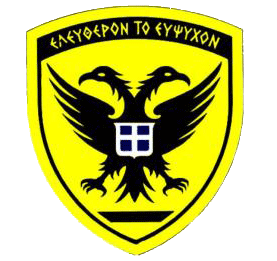General Information
The military museum of Kilkis is located east of the Kilkis city since 1966. One shall follow the national road Thessaloniki-Kilkis in order to arrive to the museum. Local restaurants provide for food while hotels around Kilkis and Thessaloniki (44 klm from Kilkis) provide for accommodation.
History
After the signing of the London peace treaty between the Balkan states and Turkey (May 17th, 1913), the allied Balkan countries felt that the time had come for them to settle their differences regarding the conquered territories.
Bulgarian demands at the time included its desire to expand over Macedonia. Serbia and Bulgaria had already signed an agreement and settled their territorial disputes, but Serbia at the end did not recognise the agreement since, at first it believed that Albania would finally be part of Serbia, thus gaining access to the Adriatic sea. The treaty provided for an independent Albanian state and Serbia's gains to the west were reduced. Bulgaria, however, insisted to annex all the agreed territories. While Serbia recognised as a Hellenic right the annexation of all the liberated territories, Bulgaria sought to drive Greece out from those territories and create the Great Bulgaria of the 1878 Saint Stephan Treaty.
Greece and Serbia, since May 19, 1913, had signed a defensive alliance. Bulgaria had already made a decision for a surprise attack against the Hellenic and Serbian army.
During the night of 16-17 June, 1913, the Bulgarians without any official declaration of war surpassingly attacked the Greeks and the Serbs, thus achieving to occupy Gevgeli, cutting off communication between the Greeks and the Serbs. However, they halted their advance towards Thessaloniki because they failed to drive the Serbs away from Axios river.
As a result, the Bulgarian army settled defensively in the Kilkis-Lachana Line and the surrounding heights. The area offered many defence advantages because the ground is totally uncovered and offers perfect observation and fire fields. Holding this line, the Bulgarians, were able to secure Serres, Sidirocastro, Doiran and Gevgeli, to control the Strimonas river bridges, which were important for their re-supply, while they secured their withdrawal in case of an emergency.
The Bulgarians deployed 32 Infantry Battalions, 1 Cavalry Regiment and 62 guns. The overall forces of the Hellenic Army were 73 Infantry Battalions, 33 Field Artillery Battalions, 9 Mountain Artillery Battalions, 8 Cavalry Companies and 8 Cavalry Platoons.
During the night of June 19th, 1913, 4 Hellenic Divisions (2nd-3rd-4th-5th) and the Cavalry Brigade moved to occupy Kilkis City. They met the Bulgarian outposts force which are fought obstinate. An obstinate and tough fight was conducted and our forces gained the land foot by foot. The 1st Infantry Regiment was in the Mandres village heights and east of Pikrolimni was the 16th Infantry Regiment.
While the day went by, the attack was generalised. The Divisions faced severe casualties but in the end the Bulgarians were forced to withdraw towards the Lipsidriou-Mavroneri Height-Ginekocastro Line. The dark is coming. During the day that followed the Bulgarians withdrew but the war was not over yet..

Museum's Geographical Position
Photo Gallery
Video
Military Museum of Kilkis
Contact Information
The museum is open:
a. From 08:00 to 14:00 and from 17:00 to 20:00 daily.
b. From 08:00 to 20:00 during the weekends.
The museum provides for WC, small parking place (for buses the parking place is located 300m away) and access facilities for people with special needs
Tel. 2341064201, 2341028660
E-mail: 71amtax@otenet.gr












































































































































